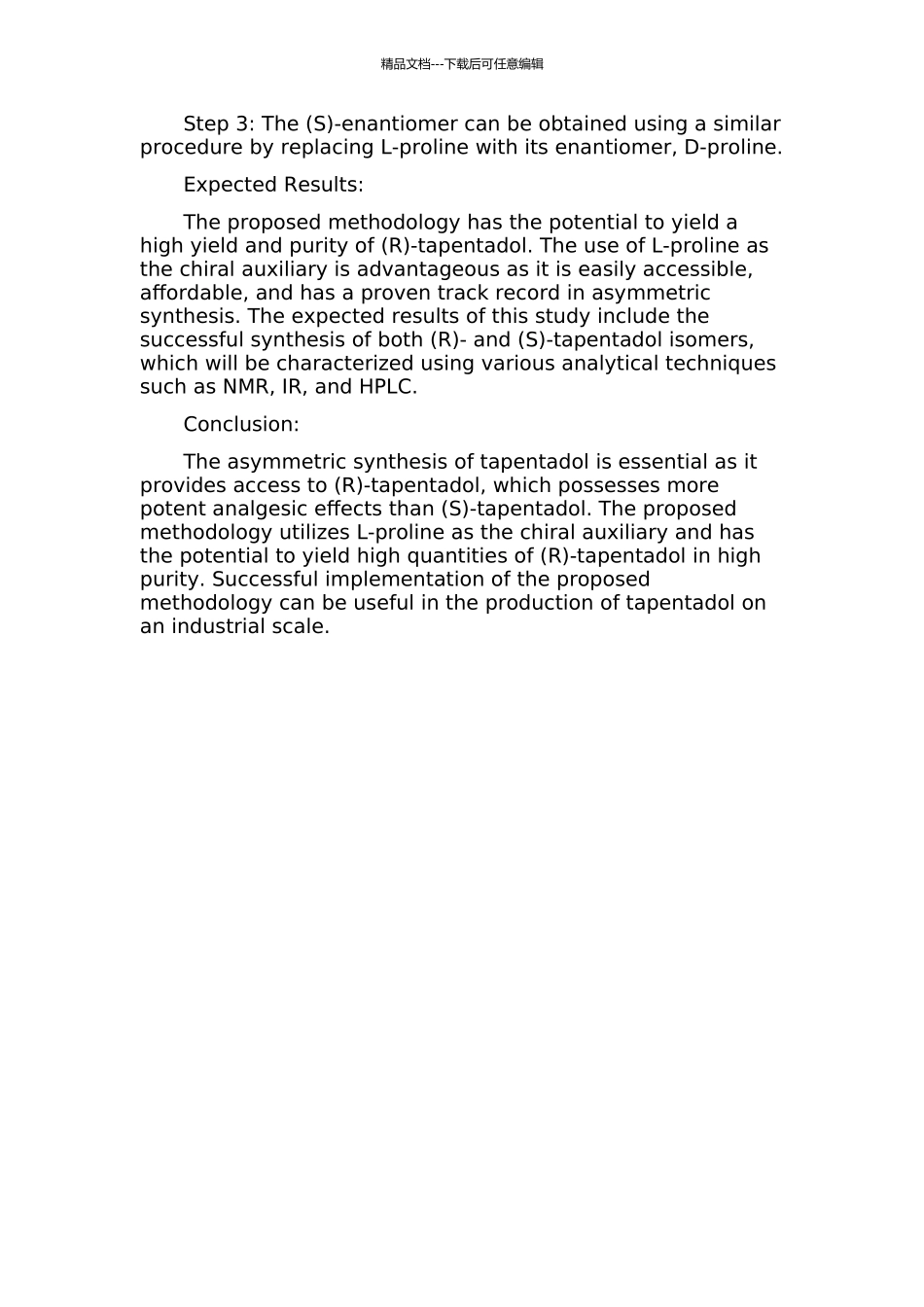精品文档---下载后可任意编辑Tapentadol 的不对称合成的开题报告Title: Asymmetric Synthesis of TapentadolIntroduction:Tapentadol is a potent analgesic medication used to treat moderate to severe acute pain. It is a centrally acting synthetic analgesic that has both norepinephrine reuptake inhibition and μ-opioid receptor agonism activities. The drug is marketed under the trade name Nucynta, and its chemical structure consists of two stereoisomers, (R)- and (S)-tapentadol. Among the two stereoisomers, (R)-tapentadol possesses more potent analgesic effects relative to (S)-tapentadol. In addition, (R)-tapentadol has a lower risk of abuse and dependence potential than other opioids. Consequently, it is crucial to develop efficient methods for the asymmetric synthesis of tapentadol to produce its (R)-stereoisomer in high yield and purity.Objectives:The main objective of this research is to develop an efficient and straightforward method for the asymmetric synthesis of tapentadol, which yields significant quantities of (R)-tapentadol in high purity.Methodology:The asymmetric synthesis of tapentadol can be achieved using a variety of chiral auxiliaries or catalysts. Some of the commonly used chemical catalysts include Pd, Ru, and Rh, among others. Alternative approaches involve using chiral auxiliaries such as enantiomerically pure amino acids, for example, L-proline or L-tryptophan, which can selectively generate (R)- or (S)-enantiomers. In this study, we propose to use L-proline as the chiral auxiliary for the asymmetric synthesis of tapentadol. The synthetic procedure will involve the following steps;Step 1: Acylation of L-proline with a suitable acid chloride, such as 3,4-dimethoxybenzoyl chloride. This step forms an N-acyl-L-proline interm...

